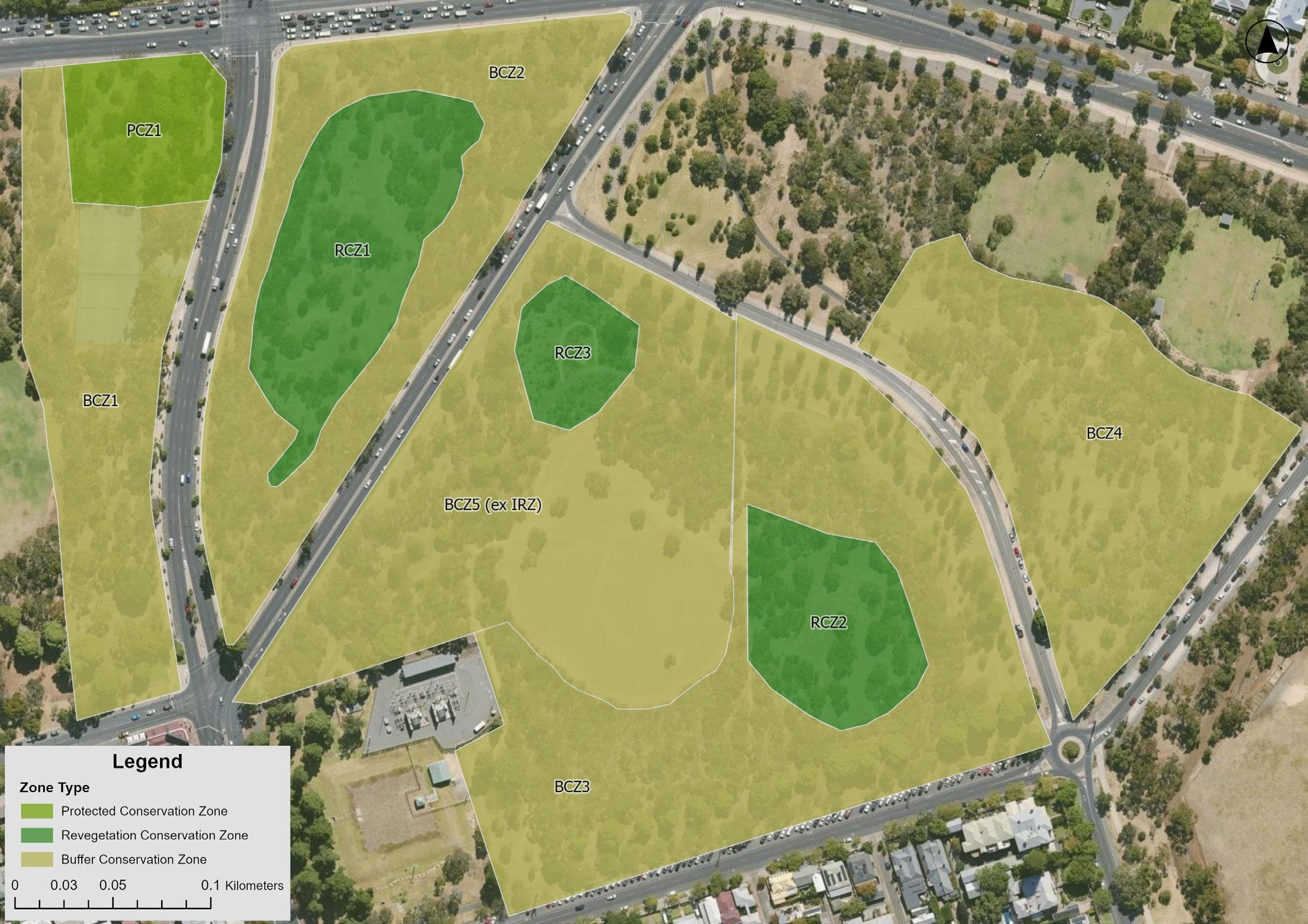by Shane Sody
A City Council report on biodiversity has revealed the success of re-greening and habitat restoration in selected parts of your Park Lands.
The first survey of Park Lands biodversity in 20 years identified new species of native bees, as well three species of microbats, an eel, and the re-emergence of rare grasses and wildflowers.
The City Council's biodiversity report, released earlier this month, relies upon field surveys over the past year, as well as hundreds of citizen science observations.
Wetland restoration in G.S. Kingston Park / Wirrarninthi (Park 23)
Its findings were presented to the Council's Planning, Development and Business Affairs Committee on 2 July.
Among the surprising findings in the report were:
three species of microbat, that were not previously recorded in the Adelaide Park Lands.
one Short-finned Eel was observed in Torrens Lake, the first observation of the species above the city weir recorded during scientific surveys;
at least two, potentially up to ten, unidentified native bee species that have not been described in scientific literature; and
a rarely recorded species, the Jewel Beetle was recorded twice for the first time in the Adelaide Park Lands. There are only four records of this species in South Australia.
From top left: Sweat Bee (Lipotriches (Austronomia) flavoviridis) Pic: Bernhardt Jacob; Short-finned Eel (Anguilla australis) Pic: Museums Victoria; Jewel Beetle (Diphucrania trimentula) Pic: Peter Lang; Rock Logania (Logania saxatilis). Pic Myall Tarran / iNaturalist; Swollen spear-grass - (Austrostipa gibbosa) Pic: Matthew Lee / iNaturalist; Chequered Copper butterfly (Lucia limbara). Pic: Butterfly Conservation Society; Lesser Long-Eared Bat (Nyctophilus geoffroyi) Pic: Ariana Ananda
The survey also located five threatened plant species (classed as "rare" or "endangered" in South Australia) including Rock Logania and Swollen spear-grass.
The survey did not look specifically at bird species, nor reptiles or amphibians, but did observe the Australasian Shoveler ("rare" in SA) and the Yellow-tailed Black Cockatoo - ("vulnerable" in SA) as well as two turtle species, four lizard species, and one frog species.
Left: Australasian Shoveller. Pic: deborod / iNaturalist. and Right: Yellow-tailed black cockatoo. Pic: Thomas Hunt/City of Adelaide
There are several factors creating pressure on the biodiversity of your Park Lands. Most obviously, much of your Park Lands has been whittled away, over generations, by new buildings. The demands of community sport, and even professional sport, leave little room for biodiversity.
Nevertheless the City Council has identified seven areas (what it calls “Key Biodiversity Areas”) within your Park Lands, and is working to protect and encourage the biodiversity found in these select locations.






See the City of Adelaide’s full Biodiversity Report here: (PDF, 62 pages, 15.3 Mb)
The author of this article, Shane Sody, is the President of the Adelaide Park Lands Association and the editor of the semi-monthly newsletter, "Open Green Public".
Subscribe here.
https://adelaideparklands.m-pages.com/YWRrGW/adelaide-park-lands-assn-mailing
Shane Sody








